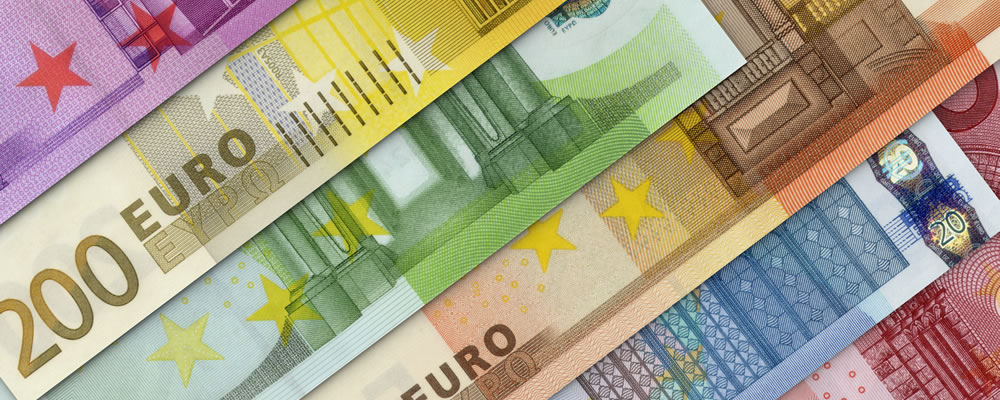Despite some positive Eurozone data the EUR USD exchange rate trended lower at the start of the week, with the Greek bailout back in the spotlight once again.
- EUR exchange rates hampered by Greek bailout concerns – Markets maintained worries over outlook of Greek economy and the wider currency union
- Pound struggled to recover from flash crash – Prospect of a hard Brexit expected to exert further downside pressure on Sterling
- Disappointing US payrolls dented odds of imminent Fed rate hike – EUR USD exchange rate benefitted from weaker-than-expected labour market data
- EUR GBP exchange rate predicted to trend higher amidst lack of UK data – Market sentiment to continue driving Pound movement
Even so, the Euro has continued to extend its gains over the Pound as worries continue to mount over the future of the UK economy, with confidence dented by the increasing likelihood of a a hard Brexit.
Greek Bailout Delays Could Weigh on Euro (EUR) Demand
A raft of better-than-expected German trade data has offered some limited support to the Euro (EUR) at the start of the week. Although the Eurozone’s powerhouse economy has demonstrated fresh signs of robustness, with exports rebounding strongly to rise 5.4% on the month in August, the mood of investors has remained a little muted. In large part this is due to fresh worries over the future of the Greek bailout, with Eurozone finance ministers meeting in Luxembourg to discuss progress towards creditor-mandated austerity reforms.
If the next tranche of bailout funds are not approved at this juncture the single currency is likely to come under increased pressure. As Greece continues to struggle under the burden of pushing through further unpopular reforms in order to meet its targets there are mounting concerns that the funds could be delayed further. Given the lacklustre performance of the Greek economy in recent months this does not seem to bode overly well for the outlook of the currency union as a whole. Suggestions that the International Monetary Fund (IMF) could be winding down its active involvement with the bailout could also see EUR exchange rates driven lower.
EUR GBP Exchange Rate Forecast to Make Further Gains as Brexit Worries Intensify
Following Friday’s dramatic flash crash and the ensuing Pound (GBP) volatility, the appeal of the currency has remained decidedly limited. Investors are seeing little reason to buy back into the softened Sterling, with worries over the prospect of a hard Brexit continuing to circulate. Fresh anxiety has been provoked by comments from the head of the CBI, who has warned that the increasingly hard line of rhetoric being taken by politicians risks destroying the UK’s open economy. As David Bloom, strategist at HSBC, notes:
‘It is becoming clear that many European countries will come to the negotiation table looking for political damage limitation rather than economic damage limitation. A lose-lose situation is the inevitable outcome.’
With domestic data rather limited in the coming week and investor sentiment primarily focused on the Brexit issue it seems unlikely that the Pound will pick up particularly. Should politicians on both sides of the Channel continue to make tough comments on the matter and the odds of a hard exit increase the Euro to Pound (EUR GBP) exchange rate is likely to see further upside movement.
US Dollar (USD) Recovered Ground after Disappointing Non-Farm Payrolls Data
Markets were not encouraged by September’s US Non-Farm Payrolls report, which disappointed on Friday. The headline figure clocked in at 156,000 rather than the predicted 167,000 while the Unemployment Rate unexpectedly rose to 5.0%. This ran counter to the stronger signals from earlier labour market data, prompting the Euro to US Dollar (EUR USD) exchange rate to trend sharply higher in response. As this data was rather less bullish than expected the odds of an imminent Federal Reserve rate hike were seen to drop, with dovish policymakers unlikely to shift their stance in the wake of the report.
However, even with the US markets closed for a bank holiday at the start of the week, the ‘Greenback’ has been recovering some ground. Markets are continuing to bet that interest rates will be raised in December, with focus shifting back towards the latest comments from Fed officials. Tuesday’s NFIB Small Business Optimism and Labour Market Conditions Index results could undermine the EUR USD exchange rate further, providing that the world’s largest economy continues to show signs of robustness.
Current Interbank Exchange Rates
At time of writing, the Euro to Pound (EUR GBP) exchange rate was trending narrowly in the region of 0.90, while the Euro to US Dollar (EUR USD) pairing was slumped around 1.11.



